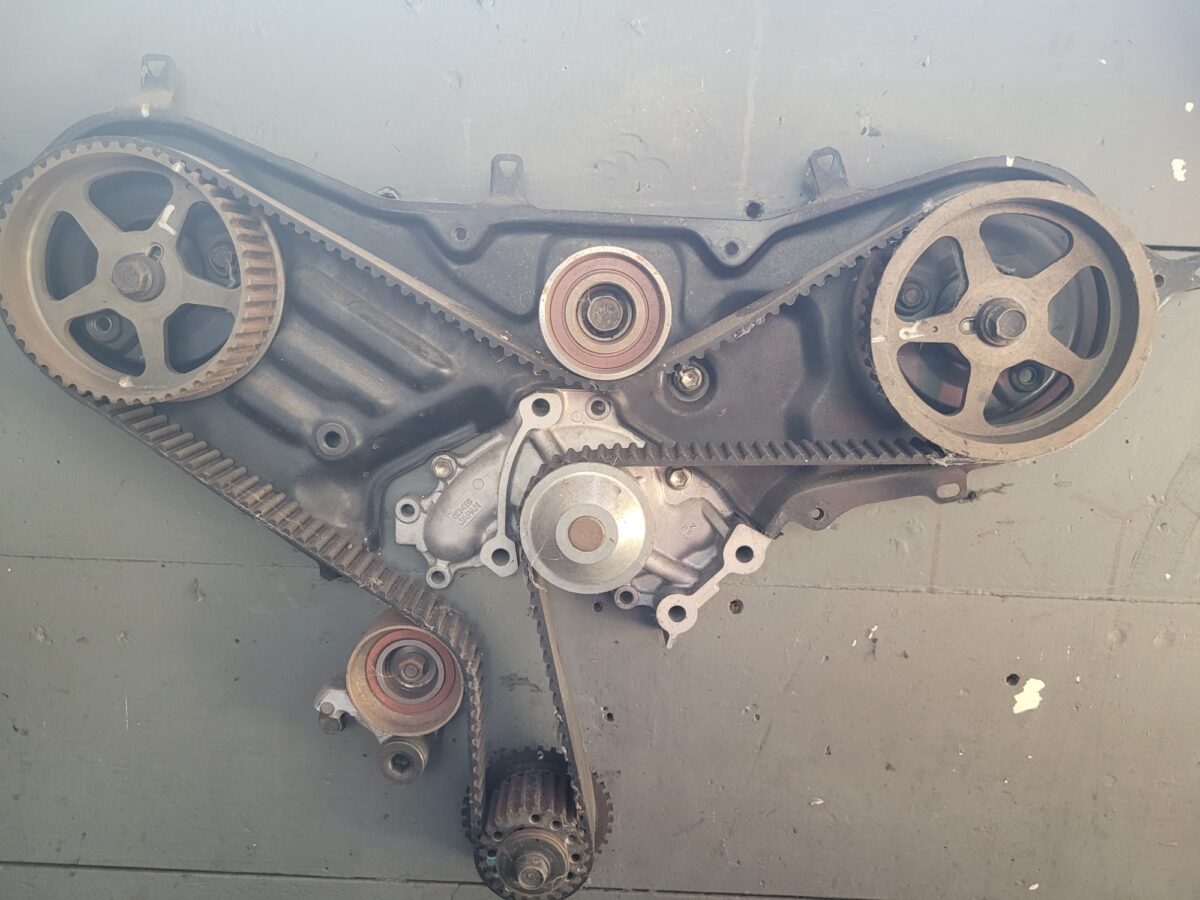1. Have a Good Look at the Timing Belt
Alright, reckon you don’t need a textbook to spot something dodgy with your timing belt — just pop the bonnet and have a decent look (or ask us to show you next time you’re in for a car service at our Hamilton workshop). Out in the ‘burbs, belting up and down Ulster Street or hitting the speed bumps near Chartwell, we see a fair few belts on everything from Suzuki Swifts to Hyundai i30s and the odd SsangYong Rexton.
What are you looking for? Cracks along the belt, bits starting to fray, or maybe a glazed, shiny look — all signs things are on the way out. We often get customers from places like Cambridge or Morrinsville popping in after a long commute, and you can really see the toll from all that stop-start through the Frankton lights or in the winter strop up Dinsdale hill.
If you want more detail on what worn timing belts look like (and what to check), have a gander at this timing belt wear guide.
2. Notice Anything Strange With the Way Your Car’s Running?
We get all sorts in — young blokes in their Mazdas, mums in their Honda Fit, even retirees from Te Awamutu running hybrid repair on a Prius. But one thing’s the same: if your timing belt’s dodgy, your car won’t run right, end of story. Maybe it’s misfiring or running rough when you’re idling at the Claudelands lights. Maybe it just doesn’t want to start when you need to dash off down Kahikatea Drive.
Old, worn out timing belts can mess up the timing and make your engine stutter, misfire, or sound all sorts of wrong. If you’re noticing these issues — especially with the Hamilton stop-start, potholes, and the occasional slushy morning — best to get in early before it becomes a much bigger issue.
Want to know more? Have a read here for common engine performance symptoms.
3. Stick to the Manufacturer’s Recommendations
Here’s the honest truth: it doesn’t matter if you’re driving a tidy Kia Sportage out in Rototuna or a Peugeot wagon doing the rounds between Tamahere and Hamilton East — every manufacturer’s got a guideline for when that timing belt needs changing. Usually it’s every 60,000 to 100,000kms, or every 5-7 years, but some Euro models can be a bit fussier.
We see a lot of folks forgetting about the timing belt between WOFs, especially if the car “feels fine.” But out in NZ conditions — summer dust out in Ngāruawāhia, foggy mornings on the way into town — rubber breaks down quicker than you’d think.
Keep a note of your intervals, or just ask one of our technicians next time you’re in. It saves all sorts of grief later. Want to know why regular servicing keeps your wallet and engine happier? Here’s a good chinwag about it: regular vehicle servicing.
Why Grimmer Motors? (Apart from Being Hamilton Locals Who Know Their Stuff)
Whether you’re running errands down Peachgrove Road or popping over from Matangi, having a timing belt give up — that’s a nightmare. At Grimmer Motors, we get Hamilton drivers, and we get the cars they drive. Our technicians have seen the lot: Toyotas from Melville, Euros from Hillcrest, a Daihatsu from Huntly, even the odd Subaru Forester that’s seen more farm paddocks than most utes.
We offer solid advice, no mucking around. Full engine service, WOF, or just a “can you have a quick look?” — all good. Our priority’s always to keep you and your car going, safely and reliably, for as long as possible.
Don’t leave it ’til you’re stranded halfway down Lake Road — book in, let us give that timing belt (and the rest of your engine) a proper check. Peace of mind is worth it, and we’re only around the corner.

